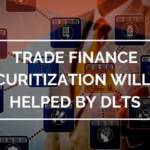Estimated reading time: 3 minutes
Fraud is not a victimless crime.
Perhaps it may seem so given the removed nature of fraudulent behaviour. But the reality is that, often, those most affected are smaller businesses and real people that rely on larger banks for cash flow.
The discourse over the last few years has morphed and shifted, but the foundational takeaway has always been a call to action in finding durable solutions to mitigate this risk.
Attending a talk at Sibos with Managing Director, US and Canada, Ben Arber and Gonzalo Perez Verdicchio, chapter lead API product management at SWIFT, Trade Finance Global (TFG) was able to learn more about the next steps for the market.

Market solutions to help mitigate fraud
There are many avenues to explore that will help dwindle the vast number of fraudulent attacks in the financial sector.
A key emphasis during the talk was the need for multiple financial institutions (FIs) to band together and share information in a secure way. Decentralising data is an important hurdle to overcome, ultimately forwarding development in this area.
At the moment there are clear digital islands popping up across the world, and this has hindered the sort of data-sharing that would, for example, help companies deal with clients that appear fraudulent, or deconstruct documents whose contents are ‘fake.’
Arber noted that there is a growing desire for banks to work together, expanding the registry and allowing for global and scalable solutions.
Arber spoke to TFG exclusively saying, “Digitising trade is the next vital step for mitigating risk such as fraud.”
Protection stimulates innovation
The new collaboration between SWIFT and Monetago was a key talking point.
Arber highlighted that the need for a globally secure authentification platform was very necessary for the fight against fraud. Unfortunately, enforcing this is more complex than voicing it.
Credit card payments in 2018 totalled $44.7 billion in the U.S. alone. With these sorts of numbers, it is easy to see how development in this space has been slow-moving.
So, how can fraud be effectively managed?
Prevention. A movement towards solutions that help locate and flag a fraudulent transaction before it takes place is the biggest tool for the market right now.
This would, in turn, give lending institutions––and businesses in general––greater confidence to enter markets and distribute liquidity.
This is important to consider, given that larger corporates are increasingly withdrawing from markets that really need support as a result of fraud risk in geographical areas. The implications of this are far-reaching.
Often, these regions which are witnessing a mass exodus of banking support are those that really need the liquidity––areas that are rich with small- and medium-sized enterprises (SMEs).

Fragmentation
As a consumer, there are certain variables that might hinder frictionless trade; varying regulations is one of them.
For many, it is the biggest obstacle.
Connecting to many services with their own set of rules can slow down the process, but having a standardised approach could solve this issue. A single channel would streamline operations, making it easier for customers on the application programming interface (API).
Overall, platforms that allow for optimised use, such as SWIFT, enable less time to market, higher security––meaning lower risk––and scale.
In an exclusive talk after the session Verdicchio spoke to TFG and added, “There are still many steps ahead to [successfully] make fraud solutions global.”




























